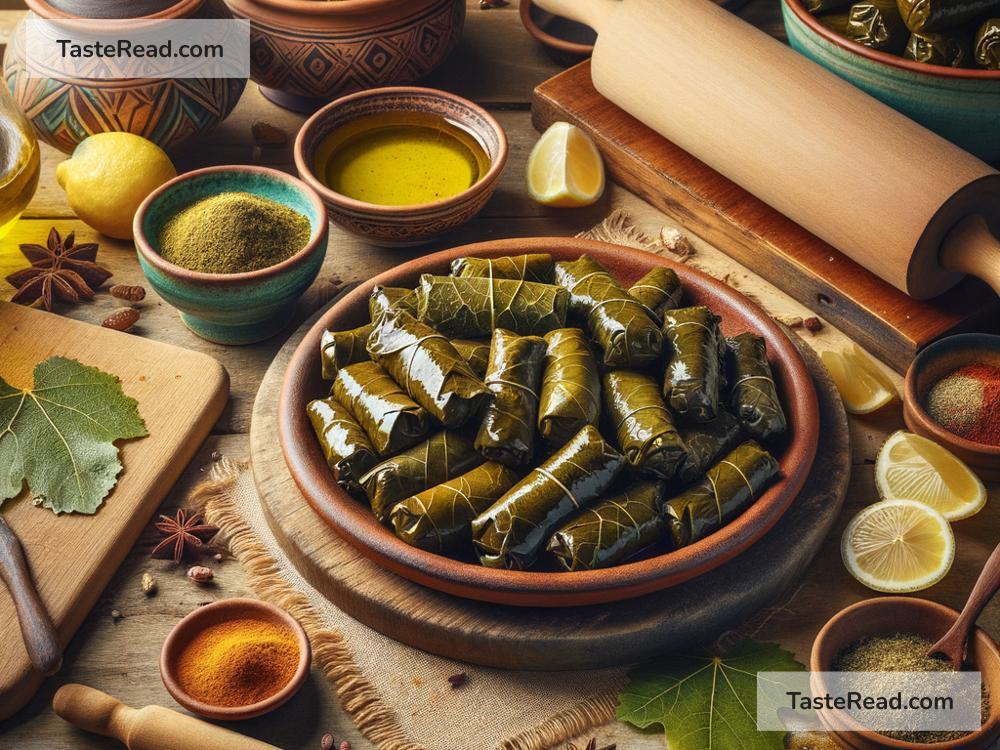Discovering Intricate Mediterranean Stuffed Grape Leaves in Lebanon
The Mediterranean is known for its vibrant cuisine, rich history, and beautiful landscapes. Among its culinary treasures, stuffed grape leaves stand out as a small yet delightful dish that tells the story of tradition and culture. In Lebanon, these delicate bites are a beloved part of family meals, celebrations, and shared memories. This blog will take you on a journey to discover the intricate art and flavors of stuffed grape leaves in Lebanon.
What Are Stuffed Grape Leaves?
Stuffed grape leaves, often called “warak enab” in Arabic, are a staple in Lebanese cuisine. These small rolls are made by wrapping a mixture of rice, herbs, and sometimes ground meat inside tender grape leaves. The stuffed rolls are then cooked until perfectly soft, absorbing the aromatic flavors of olive oil, lemon juice, and spices.
People eat them both warm or cold, depending on the recipe and occasion. Some versions are vegetarian, making them a popular option during Lent or other fasting periods, while other versions include meat, adding depth to the flavors.
Traditional Lebanese Ingredients
The filling for the grape leaves varies slightly based on personal preferences and regional touches, but it always starts with simple, wholesome ingredients.
In Lebanon, the vegetarian version often includes:
– Rice: Plain white rice is the base of the filling.
– Fresh Herbs: Parsley, dill, and mint are the stars, giving a unique burst of flavor.
– Tomatoes: Tiny pieces of tomatoes add juiciness to the mix.
– Onions: Chopped onions give a mild sweetness.
– Spices: Basic seasonings like salt, pepper, and allspice create warm, earthy tones.
For non-vegetarian stuffed grape leaves, ground lamb or beef is added to the rice mixture. This version is heartier and commonly served hot.
The grape leaves themselves are another vital component. In Lebanon, fresh grape leaves are used when they’re in season, though preserved leaves in jars are a convenient alternative.
The Preparation: A Labor of Love
Making stuffed grape leaves is an art that requires patience and technique. It’s often done as a group activity, where families and friends gather to fold dozens—or even hundreds—of grape leaves together. This shared experience is part of the beauty of Lebanese cuisine.
To begin, the grape leaves are gently boiled or soaked to make them pliable. The rice mixture is prepared separately, combining all the ingredients into a fragrant filling.
Then comes the rolling. A small amount of filling is placed at the base of the leaf, which is then folded over and rolled tightly into a neat cylinder. The goal is to ensure the filling is securely wrapped, creating uniform rolls that stay intact while cooking.
Once all the grape leaves are rolled, they are layered in a pot and covered with water, olive oil, and lemon juice. In some homes, a heavy plate is placed on top during cooking to keep them tightly packed and prevent them from opening. The result is a pot of beautifully steamed stuffed grape leaves, rich in flavor and texture.
A Dish for Every Occasion
In Lebanon, stuffed grape leaves are enjoyed in many settings. As part of mezze—a collection of small plates shared among diners—they are a crowd favorite. The vegetarian version is perfect for afternoon snacks or lighter meals, while the meat-filled rolls are served as a main dish alongside yogurt or fresh salad.
Stuffed grape leaves are also a highlight during holidays and family gatherings. People of all ages come together to enjoy this timeless dish that carries the warmth of tradition.
The Personal Touch of Lebanon
One of the most unique aspects of Lebanese grape leaves is the personal touch each household adds to the recipe. Every family has its own way of preparing them, often passed down through generations. Some might use more mint, while others might prefer a tangier flavor by adding additional lemon juice. These subtle variations make it exciting to try stuffed grape leaves from different Lebanese homes and restaurants.
What truly stands out is the sense of joy and togetherness the dish offers. Whether rolled by grandparents in a rural village or served at a fine restaurant in Beirut, stuffed grape leaves embody the generosity and warmth of Lebanese hospitality.
Where to Try Stuffed Grape Leaves in Lebanon
If you’re lucky enough to visit Lebanon, you’ll find stuffed grape leaves in almost every corner of the country. From bustling street markets to high-end restaurants, this dish is a staple that anyone can enjoy. Some of the best grape leaves can be found at family-owned eateries, where recipes are lovingly preserved and prepared by expert hands.
For the adventurous traveler, visiting small villages where locals grow their own grape leaves can be an unforgettable experience. Imagine sitting in a sunlit home, surrounded by mountains and vineyards, enjoying fresh, homemade warak enab. It’s the ultimate way to connect with Lebanese culture.
Conclusion
Stuffed grape leaves are much more than a delicious snack or meal. In Lebanon, they represent heritage, hospitality, and family bonds. The art of preparing them showcases the love and care Lebanese people pour into their food, and the flavors capture the heart of Mediterranean cuisine.
Whether you try making them yourself or taste them on your travels to Lebanon, stuffed grape leaves are a culinary experience you won’t forget. They remind us that food is not just about sustenance—it’s about community, tradition, and the stories that bring us together.


